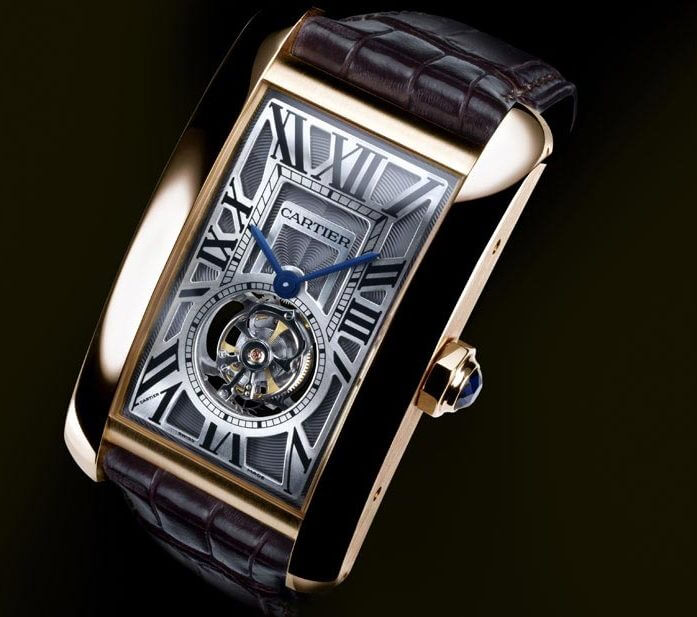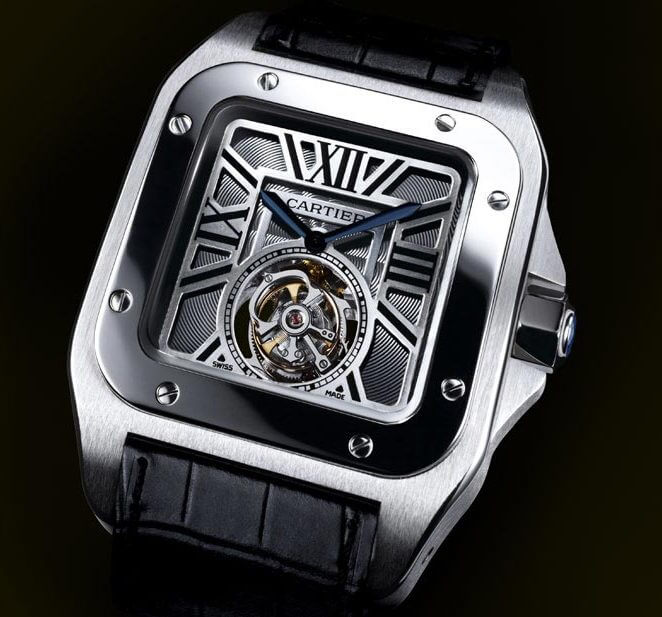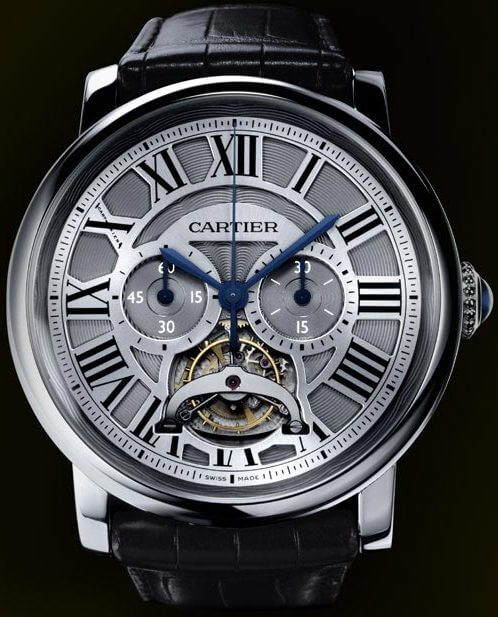While Cartier has produced watches for over a century, including such iconic models as the timepieces Tank and Santos, they weren’t considered in the same breath as Patek Philippe or Vacheron Constantin. The historic French luxury house decided it was high time to enter the ranks of Haute Horlogerie. And when Cartier makes an entrance, you can be sure it will be done with panache. The wristwatch Ballon Bleu Flying Tourbillon de Cartier, which debuted in 2008, showed off a complex free-floating tourbillon mechanism, while also scaling the heights required to receive the Geneva Seal hallmark. The 9452 MC calibre, based on an existing Roger Dubuis design (Roger Dubuis and Cartier are both Richemont brands), was completely re-engineered and upgraded to meet Cartier’s standards for quality and durability. From the wide-open dial the eyes can feast on the C-shaped tourbillon carriage, located at six o’clock, dancing around its axis once every sixty seconds. The 9452 MC calibre laid the foundation for Cartier as a serious watchmaker.
This year at SIHH 2009, Cartier presented the Ballon Bleu Flying Tourbillon de Cartier watch in white gold. In addition, they incorporated the 9452 MC into two classics, the Tank Américaine in pink gold watch and the Santos100 in white gold watch. In individually numbered cases, both are fitted with a sapphire crystal front and back, have an octagonal crown in 18 carat gold set with a faceted sapphire, and are water resistant to 30 meters.
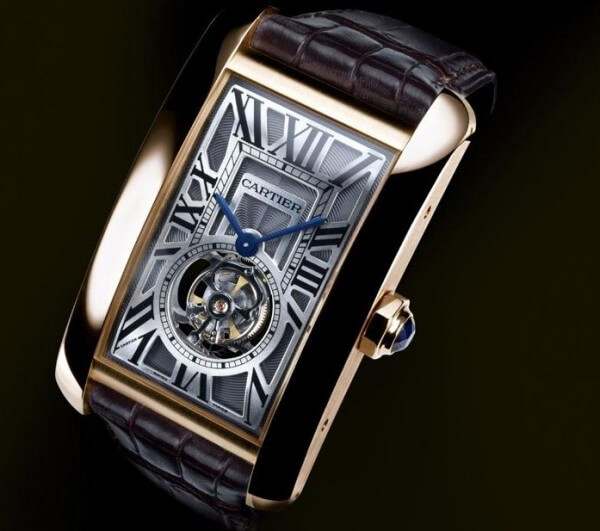
The new 9611 MC caliber
Continuing to expand their technical repertoire, Cartier introduced two new calibres, blending their signature style with in-house movement manufacture. Carole Forestier-Kasapi, formerly head of the technical bureau at renowned complications house Renaud & Papi (now part of Audemars Piguet), led the design team located in La Chaux-de-Fonds. However, she says that the most important technical experience that has enriched her career thus far remains the work she carried out during 8 years at Valfleurier assisting Eric Klein, where they designed many collections of manufacture movements including a whole range of complications for several brands in the Richemont group, including Cartier for the Collection Privée Cartier Paris.
The 9611 MC calibre in the Santos 100 skeleton timepiece started with a general marketing brief requesting a skeleton movement dedicated to the Santos watch that was at once creative and contemporary in style. “I created the watch movement with the aim of providing it with what was lacking in all other skeleton movements on the market: a time display,” explains Forestier-Kasapi. With bridges conceived to depict Roman numerals, this patented movement not only powers the watch but also provides time markers in its skeletonized frame. The manual wind movement, capable of storing 72 hours of energy from two barrels, fits snugly in the oversized palladium case. As can be expected, Cartier attended to all the aesthetic details with the beveled bridge and main plate, circular-grained wheels and satin-brushed sides. A close look at the regulator pointer reveals the shape of the Cartier ‘C’.
Reconfiguring the chronograph
Cartier reconfigures the chronograph in the 9907 MC calibre giving it expression in the Rotonde de Cartier central chronograph. “We really wanted to add something to the chronograph display, which is difficult in a classical configuration with small counters,” says Forestier-Karpasi. She devised a solution by dispensing with the hour counter altogether and dividing the watch into two separate planes, building the movement to correspond to the specific layout of the functions. The blued-steel hour and minute hands circle the lower plane, their sword tips indicating the time on the Roman numeral chapter ring. A level above, the chronograph marks increments of time. A 180-degree arced counter keeps track of up to thirty minutes counted off by the centered blued seconds hand. Instead of employing the usual cam system, which demands a lot of energy, a column wheel controls the three chronograph functions of stop, start and reset.
The Rotonde de Cartier single push-piece tourbillon chronograph came about from a suggestion by Forestier-Karpasi. At the time, Cartier was looking to create a further complication on a tourbillon. “I suggested to marketing that we should produce a single push-piece chronograph combined with the tourbillon movement, as it is the emblematic complication at Cartier,” she says. “Indeed, Cartier Paris created the first Tortue single push-piece chronographs for Cartier New York as early as 1929.” In conjunction with Renaud & Papi, Forestier-Karpasi worked to develop the exclusive calibre 9431 MC in 2005, which, for the first time, housed the tourbillon and the chronograph complications together.
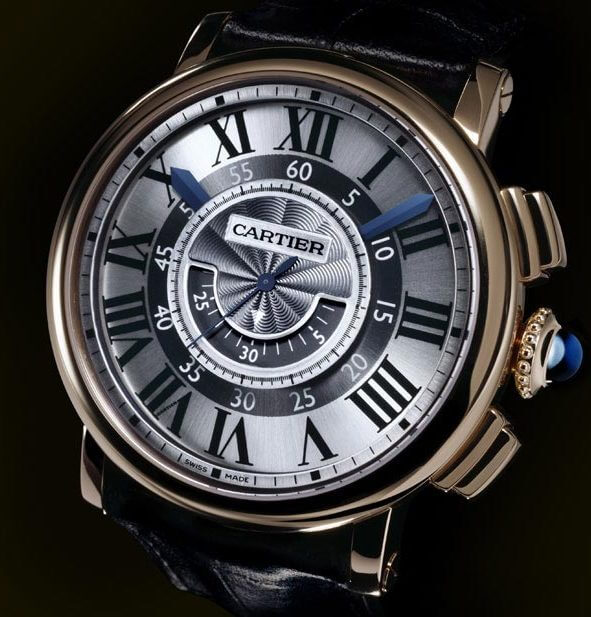
Established DNA and innovation
The system employs an operating lever that links directly to the winding mechanism and the column wheel to control all chronograph functions. The transparent sapphire crystal case-back enables an appreciation of the components in motion. Meanwhile, the front view compels through contrast and depth, with a two-level dial consisting of a combination of guilloche and skeleton elements. Beneath the emblematic Cartier C-shaped tourbillon bridge glowing with a mirror polish, circles the tourbillon. This watch, produced in a limited edition series of 50, comes cased in platinum.
In developing high horology watches for Cartier, Forestier-Karpasi has been given the daunting task of transmitting an established DNA to a product line, and at the same time innovating while respecting a 150-year history. From the results it is clear Ms. Forestier-Kasapi has triumphed.








